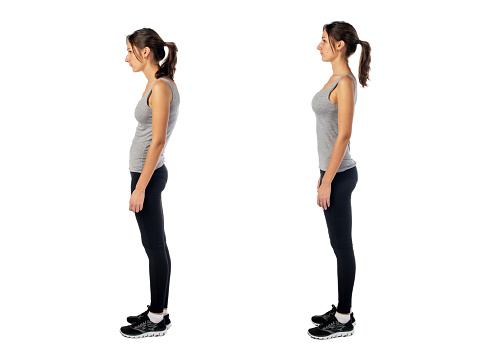Posture is often associated with standing upright with the shoulders pulled back and the chest opened up, but posture is more than just standing straight.
Your body can’t hold one particular posture when it moves, so your muscles need to learn how to change “postures” when it changes positions.
When you think about what it means to have “good posture,” consider how that relates to your body in motion, and the changes movement produces in your body’s alignment.
When you bend over to pick something up, your pelvis is going to be in a different position while you’re bent over, than when you’re standing upright.
Therefore, your posture changes. It’s not about staying stacked a certain way 24/7, because certain functions require certain positions. Your muscles need to learn to drive your skeleton into those positions and get you out of them, so you don’t get stuck in a certain posture.
Posture changes constantly, and it goes deeper than what your posture looks like when you’re at rest. It’s one thing to be aware of your posture when you’re sitting, standing, or lying down. But have you ever given any thought to what your posture looks like when you’re moving? Exercising, golfing, walking, hiking, boxing, dancing, running, etc.?
Good posture means your body can maintain integrity throughout its structure, when at rest and when moving. Structural integrity is achieved when your muscles are functioning correctly to support your alignment and intrinsically stabilizing your body from external demands.
The better your structure can withstand external demands, like gravitational forces and daily activities, the better your alignment will become at rest. Your body won’t be beat into a certain posture, or “comfort zone,” because it will be strengthened to withstand those effects and align into a “neutral zone,” always ready to change and adapt to balance the demands placed on it.
Not all training is going to respect the concepts described above, some exercises may even cause your structural integrity to weaken- making your body more vulnerable to the forces acting on it. The exercises you perform should enhance your body’s capability to withstand gravity and daily activities, without adversity.
If you want all the gravitational gains, without the compressional pains, set up your consultation with one of our biomechanics trainers today!


